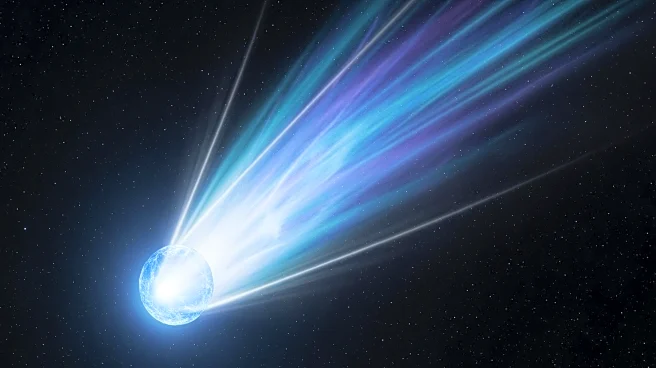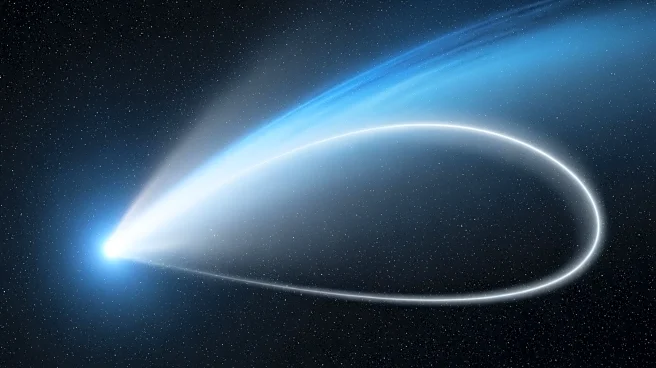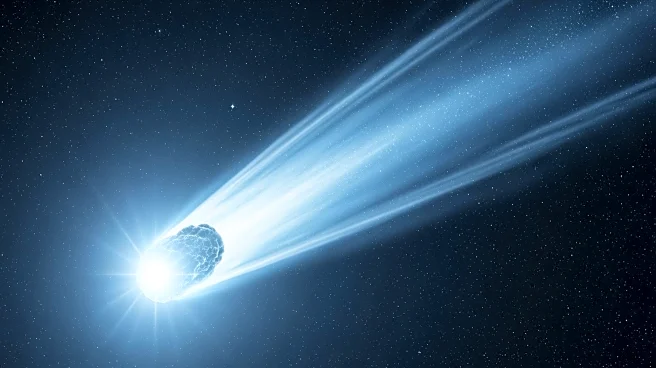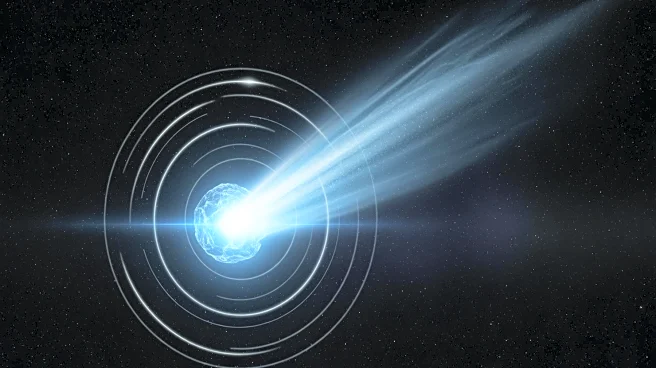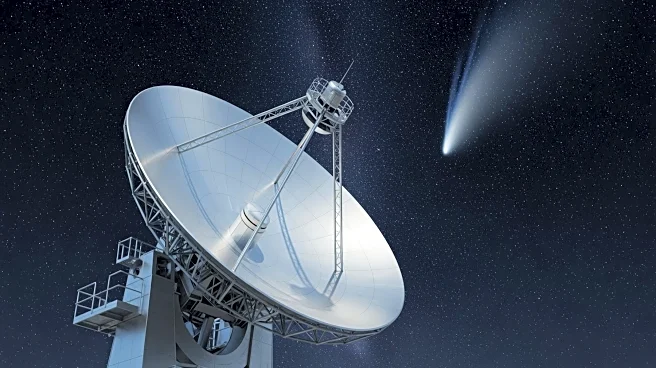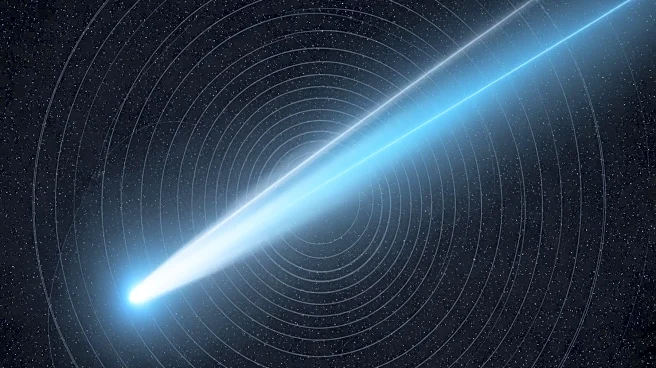What's Happening?
Recent observations of the interstellar comet 3I/Atlas have revealed significant changes in its tail structure and speed. The comet has emerged from solar conjunction with a brighter coma and a longer
ion tail, exhibiting a sun-facing anti-tail in some frames. Avi Loeb has suggested that technological thrusters could be responsible for the comet's acceleration away from the Sun, although mainstream views attribute these changes to solar heating and wind. NASA reports that the comet accelerated from 137,000 mph to 153,000 mph at perihelion, consistent with its hyperbolic trajectory.
Why It's Important?
The behavior of 3I/Atlas is crucial for understanding the dynamics of interstellar comets and their interactions with solar forces. The comet's acceleration and tail changes provide valuable data for refining models of cometary activity. Loeb's hypothesis about technological thrusters challenges conventional explanations and could lead to new theories about the origins of interstellar objects. This research has implications for space exploration and the search for extraterrestrial technology, potentially influencing scientific approaches to studying celestial phenomena.
What's Next?
Ongoing observations and astrometry are expected to provide more data on 3I/Atlas's behavior. NASA and other agencies are tracking the comet's speed and tail morphology to refine models and assess non-gravitational effects. The International Asteroid Warning Network is conducting a community exercise to improve comet astrometry, with observations scheduled through early February. These efforts aim to reduce biases and enhance understanding of the comet's trajectory and characteristics.
Beyond the Headlines
The study of 3I/Atlas raises questions about the potential for technological origins of interstellar objects. Loeb's suggestion of thrusters opens discussions about advanced extraterrestrial technology and its implications for astrophysics. This could lead to shifts in scientific priorities and funding, as well as ethical considerations about the search for extraterrestrial life. The comet's behavior may also influence public interest in space exploration and the search for intelligent life beyond Earth.
